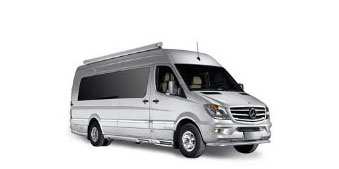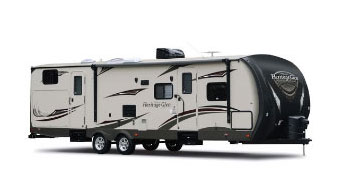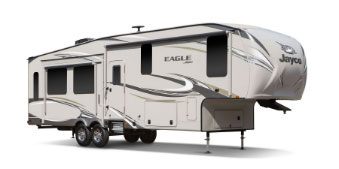How much does a camper weigh is a question you should ask yourself before making a purchase. As you research which RV to buy, one of the essential considerations is the amount of weight your vehicle will be towing.
RV and vehicle weight can be confusing for a newcomer. However, with a little information, you will be ready to purchase the perfect RV for you.
How Much Does a Camper Weigh?
On average, expect that a camper will weigh around 5,500 pounds dry weight. Dry weight means before any gear is loaded on board and before any tanks are filled. So you might expect to add an additional 1,500 pounds to that to get the actual real world weight.
But before the various types of RVs and weights can be discussed more specifically, you must have an understanding of vehicle and RV weight terminology.
Rating VS Weight/Load
Rating is the maximum allowable limit for a variety of weights. These ratings cannot be changed because the manufacturer sets them according to the design of the vehicle. For RVs, the GVWR, GAWR, and GCWR are essential.
Most people interchange the terms weight and load. However, in the RV world, vehicles have weight, and this weight creates a burden to the tires, axles, and hitches. Weight terms include NCC, CCC, GVW, GTW, GAW, GCW, and Dry Weight.
GVWR
GVWR is an acronym for Gross Vehicle Weight Rating. This rating is the maximum amount of weight allowable for the tow vehicle and RV. This rating would include liquids, passengers, cargo, and tongue weight, as well as the weight of the vehicle being towed.
GAWR
The manufacturer of the vehicle establishes the Gross Axle Weight Rating (GAWR). It is the maximum amount of weight each of the axle assemblies is designed to carry safely. This rating is measured at the tires and includes the axle assembly weight.
This rating is created using four components. These components include the tires, wheels, springs, and axle. It is established by rating the shaft on its weakest link. If a person goes over this rating, it can cause significant damage to the vehicle.
When this rating is set, it is assumed that the weight is equally divided between the two axles. The rating is based on the maximum for an individual axle. This fact means that you can overload an end of a shaft without exceeding the GAWR.
GCWR
GCWR is another way to express the Gross Combination Weight Rating. This rating is based on the combined weight of the tow vehicle and the attached vehicle being towed. It represents the maximum allowable weight of the two vehicles combined.
This rating is based on both vehicles having working brakes. It does provide an exception with a vehicle that weighs under 1,500 pounds. This rating can be found in two different areas, which include the chassis manual or the towing guide provided by the manufacturer.
NCC
Net Carrying Capacity is the first weight category in this section. This weight class was used from 1996 until 2000. The NCC represents the maximum weight of a variety of items inside the unit. These items include personal belongings, dealer-installed accessories, tools, LP-gas, fresh water, and other items you will carry in the unit.
CCC
The letters CCC stand for Cargo Carrying Capacity, which was used in place of NCC after September 2000. It denotes the formula of the GVWR minus the unloaded vehicle weight, water weight, LP gas weight, and the sleeping capacity weight rating.
GVW
When you drive a vehicle onto a scale, you get the Gross Vehicle Weight or GVW. This weight should never exceed the Gross Vehicle Weight Rating issued by the manufacturer. If the weight does exceed the GVWR, the vehicle’s warranty may be voided. This information can be found in your vehicle’s owner’s guide.
GTW
The Gross Trailer Weight is used in most towable RV applications. It is similar to the Gross Vehicle Weight and is measured by putting the trailer on a scale.
GAW
The Gross Axle Weight is the amount of weight a fully-loaded vehicle is holding on one axle. This weight is also gained by placing the car on a scale.
GCW
Gross Combination Weight is the combined weight of a fully equipped vehicle and is measured by placing the vehicle on a scale also.
Dry Weight
Dry weight is a little different than the above terms. It refers to the weight of a vehicle or trailer that is completely empty.
Curb or Wet Weight
This weight class is defined as the weight of the vehicle, including oil, lubricants, gasoline, and other standard equipment. When you add additional content or optional equipment, it adds to this weight. Passengers, driver, and cargo also increase this weight. When deciding on an RV, dry and curb/wet weight must be a consideration.
Now that you have a working knowledge of the terminology, an investigation into the average weight of the various types of RVs can be performed.
Camper Weight Chart
| RV Type | Estimate Camper Weight Range |
Class A | 13,000 to 30,000 lbs |
Class B | 4,000 to 9,000 lbs |
Class C | 10,000 to 13,000 lbs |
Travel Trailer | 1,100 to 12,000 lbs |
Pop-up | 700 to 4,000 lbs |
Fifth Wheel | 7,000 to 20,000 lbs |
In the RV world, you are offered a variety of choices when it comes to what you are hauling. Typically, it is some form of a trailer. In this article, the most common types of RVs are discussed.
Class A RVs
This class of RVs is the largest motorized units available on the market. These RVs resemble homes on wheels and can be fully-loaded with all the bells and whistles or relatively simple. They can also include items such as king-sized beds, washers, and dryers.
Some Class A RVs even have a mobile garage large enough for a sports car. If you are interested in luxury, this class is the one for you. A Class A RV can also typically pull a vehicle behind it without any issues. This class usually weights between 13,000 and 30,000 pounds and is very expensive with low gas efficiency.
Class B RVs
Class B RVs are typically referred to as camper vans. These vans are smaller than the other two classes, but they are offered with just bed and storage or with dining areas, bathrooms, and room for six sleepers. Of course, you would never get as much space or extra amenities with a Class B as you would with either Class A or C.
However, Class B does offer a four-wheel-drive option. Excellent gas economy and secure parking are another two benefits of purchasing a Class B RV. These types of RVs are between 17 to 23 feet long and weigh around 4,000 to 9,000 pounds.
Class C RVs
Class C RVs are a mid-size option for the customer. They are more significant than the Class B option but smaller than Class A options. The sleeping quarters of a Class C unit are typically located over the cab and an area in the rear of the RV.
Class C RVs have a separate bathroom where a Class B RV may not. You typically cannot tow another vehicle behind a Class C rig. These units weigh between 10,000 and 13,000 pounds and are about 20 to 30 feet long.
Travel Trailers
The travel trailer offers the most significant amount of options for an RV. A bumper pull travel trailer can easily connect to a standard hitch. These trailers range between lightweight and substantial. A small SUV can haul the smallest travel trailer.
Other travel trailers may require a more massive truck. When not in use, you can unhitch the camper and store it easily. This type of RV is excellent for those traveling to areas that need a vehicle without a trailer. For example, it can be challenging to drive an RV through the mountains.
With a travel trailer, you can unhitch at the base and enjoy a day trip to the top of the mountain. Travel trailers also offer a vast array of options, including convertible trailers, vintage trailer style, and teardrops. The average length of a travel trailer is 10 feet to 40 feet. The average weight is between 1,100 and 12,000 pounds.
Pop-up Trailers
The best advantage of a pop-up trailer is the fact they are compact and easy to store. These types of RVs are sometimes referred to as folding trailers because they fold into themselves for towing and storing. Some individuals would say the pop-up trailer is similar to tent camping because you get a similar open-air feeling.
The pop-up trailer has a living area in the middle of the container, and on either side, it has sleeping areas. If your main goal is to not sleep on the ground, this RV is perfect for you.
They do not have a lot of amenities, but they are cheaper than other options. The worst disadvantage of this type of RV is they are not appropriately insulated for lousy weather. They range from 8 feet to 16 feet and weigh between 700 and 4,000 pounds.
Fifth Wheel
While Class A is the largest RV you can buy, the fifth wheel is the largest trailer you can buy. The name fifth wheel comes from the fact that this trailer extends over the bed of a pick-up truck. The hitching mechanism, which looks like a u-shaped coupling, is secured inside the bed of the truck.
This type of mechanism allows the trailer to turn easier than just a standard hitch. Fifth wheels offer the same space and amenities as the Class A, but they also require a pick-up truck to haul them. If you want the luxury of the Class A RV with a trailer, this choice is the best one for you. These trailers range from 22 to 40 feet and 7,000 to 20,000 pounds.
How to find the weight of your trailer?
.
Conclusion
With the above information, you are well equipped to begin shopping for your RV. Camper weight can be an important factor in determining what kind of RV is right for you. Knowing how much does a camper weigh and how much gear you need to take with you can be deciding factors in your purchase.
Also Read:
- RV Fence for Dogs: Secure Your Pet in Style While Camping - March 27, 2023
- 10+ Stunning Campers that Fit in a Garage - December 31, 2022
- 8 Surprisingly Affordable Motorcycle Teardrop Campers - November 23, 2022